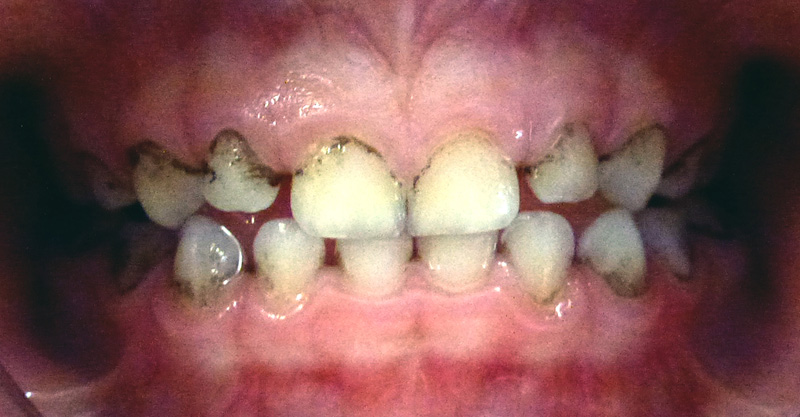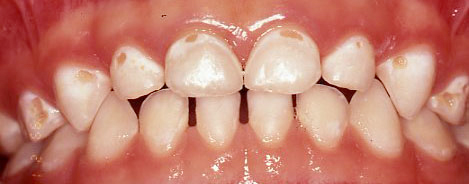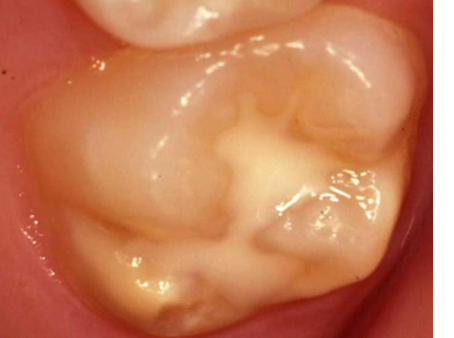Galway Child Dentist – What If…
My child is anxious / nervous?
Children come with different levels of coping skills, personalities and anxiety levels and we will take all these factors into consideration when planning your child’s dental care. Paediatric Dentists have many techniques to help make dental visits easy for you and your child.
It is best if you are relaxed about the visit also and don’t use any anxiety-provoking terms like “hurt”, “sore”, “tooth extraction” etc. Some parents delay seeking dental care for their child because of their own fears. Approaches to children’s dental care have improved greatly and you may be pleasantly surprised!
The more information you give us (in advance) about your child’s concerns/previous experience – the better. This will help us plan the best approach towards making the dental experience a pleasant one for you all.
My child is very anxious and needs dental treatment – what can be done?
Children who are very anxious and require dental work may not be able to happily tolerate dental care under local anaesthetic over a number of visits.
For patients like these we have a Hospital facility whereby all necessary dental treatment can be provided in one visit under General Anaesthetic (GA).
We will discuss this in detail with you when we have assessed your child. A written treatment plan including costs will be given. (Third party insurance e.g. Aviva, Laya, VHI etc. may cover part of the hospital cost and a small contribution towards the Anaesthetist’s fee).
Since 2006 we have successfully provided comprehensive dental care for over 500 children in the Galway Clinic with the support of Consultant Anaesthetists.
My child has special needs?
Children with special needs are welcome at this practice. We look after many children with various syndromes, physical and intellectual disability and some with unusual dental conditions.
When you contact us, please give us as much information as possible so that we can schedule an appropriate appointment. In addition to our usual comprehensive preventive advice, we will assist you with any particular requirements for your child. For example, if your child takes frequent liquid medication – it is best for their dental health to take a “sugar-free” formulation (if available); this greatly reduces their risk of tooth decay.
For over 20 years Dympna has also worked closely with the HSE and provides dental care for children with Clefts (lips and palates) – many of whom are referred at approx. 1 year of age.
My child will not let me brush their teeth. What do I do?
We think tooth brushing is not negotiable, like sitting in a car seat, or not running into the street. Because your child doesn’t understand the long-term consequences of not brushing, it is your job to make sure it happens. Here are some ways to help encourage good brushing:
- Children love to do what the grown-ups are doing. Brush your teeth at the same time, and make it a game getting all the spots in the back!
- Dry brush your child’s teeth first then let them finish brushing with a small amount of fluoride toothpaste.
- Rewards: Offer bonuses like stickers on a calendar, an extra bedtime story, or whatever reward works for your child.
Regardless of the method, make tooth cleaning part of your daily routine. Begin when your child is young (approx. 6 months). It is important to realise that tooth brushing is more than a daily chore to get through. It is an opportunity to share, and have fun with your child. If you view it that way, so will they. If these tactics don’t help, make an appointment to see Dr. Daly and she can show you some simple techniques that can help!
There are downloadable “Motivation” brushing charts on-line or we will give you one when you come to visit us.
My child does not like the taste of toothpaste??
A number of children find the taste of some toothpastes too “strong” and this can hinder their cooperation for tooth brushing. We can advise you of flavourless toothpaste or pleasantly flavoured alternatives – which also work well.
We recommend that an adult should “dry brush” their child’s teeth first – this removes most of the plaque – then your child can brush briefly again with a small amount of fluoridated toothpaste.
Habits

Children are actively growing so persistent habits such as:
- Thumb / digit sucking
- Use of soothers / dodies
- Prolonged bottle use
…can distort the shape of your child’s teeth and jaws. This can affect your child by interfering with their speech e.g. causing a lisp.
It can also push teeth forward into an unsightly position. (see picture)
If habits persist, this may also damage the position of permanent teeth – increasing their need for orthodontic treatment (braces) later.



My child grinds their teeth”? (Bruxism)
Grinding is very common in children. Parents are often concerned about the nocturnal grinding of teeth (bruxism). Often the first indication is the noise created by the child grinding on their teeth during sleep. Or parents may notice tooth wear (teeth getting shorter). One theory about tooth grinding is that it is caused by stress due to e.g. a new environment, divorce, changes at school / home; etc. Another theory relates to pressure in the inner ear at night. If there are pressure changes (like in an airplane during take-off and landing, when people are chewing gum, etc.) the child will grind their teeth by moving their jaw to equalise this pressure – this brings relief.
The majority of cases of paediatric bruxism do not require any treatment. If excessive wear of the teeth (attrition) is present, then a nightguard may be considered. However, the disadvantages of a nightguard for children are –
- Risk of dislodging and causing choking
- Interfering with growth of jaws / teeth
The good news is most children outgrow bruxism. It can come in episodes and then reduce or stop altogether.
If you are concerned about your child’s bruxism please talk to us.
My child has stained teeth?

This staining can be removed by your dentist
There are a number of reasons why children’s teeth look “stained”.
- Commonly, staining is caused by plaque/tartar left on teeth; we can clean children’s teeth and show you how to minimise future staining.
- Some medications (e.g. containing Iron) can stain teeth; we can clean this staining off. Usually good home tooth cleaning will help reduce further staining even from medication.
- Teeth that have been traumatised can change colour and look “stained”.
- Tooth decay, especially at the early stage can also look like staining.
- We see another type of staining in children called “chromogenic staining” – this can look very dramatic especially if a lot of teeth are affected. The dark staining is caused by certain pigment-producing bacteria in the mouth; we can clean the teeth but typically the staining does come back. However, with good home cleaning and regular dental cleanings, this staining does reduce as the child gets older.

4 year old child – Staining? NO – Significant tooth decay on all top teeth. Caused by bottle of milk taken to bed
If you are concerned about any type of “staining“ it is best to bring your child for a dental check-up.
My child has “two rows of teeth”?
This is not uncommon. If the baby tooth is loose, encourage your child to wiggle it so that it loosens further and falls out. The new adult incisor will continue to grow and the tongue usually pushes it forward into position. If the baby tooth is not loose, get us to check it. Sometimes teeth need a little help to come out.

My child has not lost their first baby tooth yet… and lots of their friends have?
Most children lose their first baby tooth (usually bottom front) at approx. 6 years of age – especially if they got their first baby tooth around 6 months old. However, there can be some variation in timing.
If your child has not lost their first baby tooth between 5-7 years of age do contact us on 091 565181.
My child has lost their first baby tooth and they are not 6 yet?
Most children lose their first baby tooth (usually bottom front) at approx. 6 years of age. However, some children especially those who get their baby teeth early, can lose their baby teeth early.
We consider the normal range for children to lose their first baby tooth is between 5-7 years of age – so please do not be too concerned if they seem a bit “early” or “late”.
Please contact us on 091 565181 if you have any concerns.
My child needs…
- Braces
- Root Canal
- Oral Surgery
If required (and with your consent) we can arrange onward referral to other Specialists e.g. Orthodontics (braces), Endodontists (root canal), Oral Surgeons, Periodontists (gum / bone) etc.
We are very fortunate in the West of Ireland that we have access to excellent Dental colleagues who can assist us looking after your child’s oral health.
My child has an abscess (“gumboil”)?
Note – Some abscesses can
appear smaller than this.


You should contact us immediately on 091 565181, even if your child is non symptomatic as this requires attention from the dentist.
Timely dental treatment may prevent acute problems and even prevent damage to developing permanent teeth.
My child has Molar Incisor Hypomineralisation (M.I.H)
See article linked for further information (IDA)
This is the name given to a dental condition where the enamel on children’s first permanent molars (i.e. 6 year molars) and permanent incisors (front teeth) does not form correctly.
“Hypomineralisation” means under-mineralised.
The teeth can look discoloured (e.g. cream/brown marks) and if severe the molars can break down and become quite sensitive. Children may complain of sensitivity when consuming cold foods/drinks or when brushing their teeth. In many cases parents may be the first to notice a “discolouration” of tooth/teeth.
Note: There are a number of other reasons for discolouration or sensitivity of teeth eg. Tooth decay, fracture etc.
It is very important that all tooth discolouration is checked!
1st Permanent Molar (6 year molar)
• Mild M.I.H.
Note: this tooth has been fissure sealed.


1st Permanent Molar (6 year molar)
• Mild M.I.H.
Note: this tooth has been fissure sealed.
1st Permanent Molar (6 year molar)
• Moderate M.I.H.
 Defective area of enamel.
Defective area of enamel. When defect / tooth decay removed,
When defect / tooth decay removed,the cavity is much larger.
 Cavity successfully repaired with a permanent
Cavity successfully repaired with a permanentwhite filling (composite).
Note: these teeth must be checked regularly
by a dentist.
1st Permanent Molar (6 year molar)
• Moderate – Severe M.I.H.
These teeth are too damaged to be successfully restored (long-term) with white fillings. The options for these teeth are restoration with a crown or extraction.
1. Restoration with a stainless steel crown (SSC)
Severe – Before Treatment
 Defective permanent tooth.
Defective permanent tooth.
Healthy primary (baby) tooth.
After Treatment – Stainless Steel Crown

Full coverage of tooth with a metal crown protects it for many years.
(These crowns do need to be replaced when patient is in their early twenties).
2. Extraction of some or all four severely hypomineralised first permanent molars (6 year molars)
We find it very helpful to get the opinion of an orthodontist (specialist in braces) before proceeding with extraction of permanent molars.

If teeth are very damaged / or affecting the nerve – their long term prognosis is poor – so can be best to extract them.
If done at the correct time, the next molar (12 year molar) will move nicely into the extraction space.
Permanent Incisor – 8 year old child
• Mild discolouration of permanent front tooth.

No Treatment Required
Permanent Incisor – 8 year old child
• Moderate discolouration of permanent front tooth in a child with M.I.H.
Appearance can be improved with composite (white filling material); little / no tooth structure is removed.

Before Treatment

After Treatment
“Masking” with white filling material (composite)
In later years, patient may choose another treatment, e.g. composite / porcelain veneer.
The Dentist recommends a General Anaesthetic (GA) for a Child’s Dental Treatment
If we have recommended that a child has their dental treatment completed under General Anaesthetic (GA) the usual reasons typically would be because:
- Extensive dental treatment needs to be completed
- The child is young and unable to happily tolerate multiple long appointments in the dental surgery
- Child is anxious – may have had difficult dental / medical experience in the past. Very often there is a combination of the above factors.
The decision to complete dental treatment under GA is made only after the dentist has assessed the child.
Treatment is completed by Dr. Dympna Daly and her staff plus a Consultant Anaesthetist and their team in the Galway Clinic, Doughiska, Galway.
All necessary Dental Treatment is Completed at One Visit
All necessary dental treatment is completed at the one visit which is provided as a “Day Case Procedure”- i.e. the child does not stay overnight in the hospital. The duration of treatment under General Anaesthetic (GA) – varies depending on the amount of dental treatment to be completed but typically takes 1½ – 3+ hours. After the consultation the dentist will be able to advise about the approximate time for each child.
It is natural for parents to be anxious about their child having a General Anaesthetic (GA) – but remember this method of treatment is chosen so that the child can be restored to good oral health in a controlled environment.
The benefit of this type of treatment is that all necessary dental treatment is completed in one visit. The main side effect with full mouth GA dental treatment on young healthy children, is some nausea after the anaesthetic. If this occurs, it usually resolves within a few hours.
Costs: There are 3 parts to the fees for this service
| 1. | Hospital Fee: | €995.00 (Galway Clinic Day-Case Fee) | Some / part of these may be covered by Health / Dental Insurance. No Codes currently exist for children’s dental procedures under General Anaesthetic. |
| 2. | Anaesthetist: | €350.00 per hour | |
| 3. | Dental Fees: | Costs depend on extent of dental treatment |
Health Insurance
If you have Health Insurance, they may cover the cost of the Hospital fee, less the excess on your policy, and pay a small contribution of approx. €180 towards the Anaesthetist’s fee. We write to them on your behalf to secure this cover.
Dental Insurance
There are 2 Dental Insurance Providers available – VHI Dental and De-Care Dental
They provide immediate cover for dental visits in the dental practice – after 3 months, members are covered for a percentage of the dental costs.
Tax Relief
Med 2 Form – click here to download – also available from Tax office.
You can download your Med 2 Form above where it also explains which treatments qualify for tax relief. We complete Med 2 forms for all eligible treatment and give to parents when treatment is completed.






